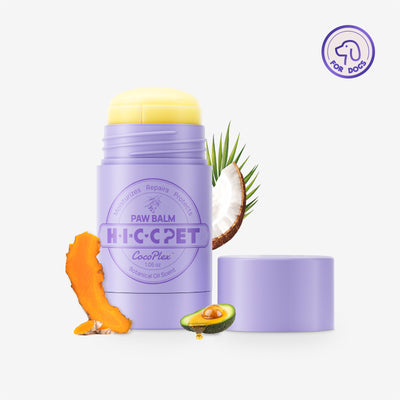Table of Content

Intact pets, also called unaltered pets, are those who have not been spayed or neutered. Spaying is also known as ovariohysterectomy which is when the uterus and ovaries are removed in female pets. Neutering, also known as orchiectomy is the removal of a male pet’s testicles. It is done to mitigate various health and behavioral concerns. Spaying and neutering help reduce the number of homeless pets and prevent the problems caused by unwanted litters, which eases pressure on community resources. Keep reading to learn more about the benefits of spaying and neutering pets.
Health Benefits for Pets
Spaying and neutering dogs and cats offers multiple physical health benefits which in turn results in a longer life. There are multiple fatal diseases that intact pets can contract due to leaving their reproductive organs intact. Leaving female pets intact increases their risk of developing pyometra , ovarian , and uterine cancer . Intact male dogs and cats run an increased risk of developing testicular cancer as well as prostate cancer and other prostate-related issues. Spaying and neutering have also been proven to increase a pet’s life expectancy, according to a study by the University of Georgia with 70,000. This study showed that neutered male dogs lived an average of 13.8% longer than their unaltered counterparts while spayed female dogs lived 26.3% longer proving the benefits of spaying and neutering pets.
Positive Impact on Behavior

Intact male and female dogs and cats often exhibit undesirable behaviors due to being unaltered. Among these, a notable one is the tendency to roam in search of a mate for male dogs and leading territory marking, including within your home. Intact dogs are more prone to urine marking, a behavior that can be significantly reduced or eliminated by spaying or neutering. While commonly associated with male dogs, females may also exhibit this behavior. Similarly, for cats, the urge to spray is particularly strong in those not altered, making early alteration by five months old the simplest solution to prevent this issue. Neutering resolves approximately 90% of marking problems in cats, even in those that have been doing it for a while, and can also mitigate other behaviors such as howling, roaming, and fighting with other males. Spaying and neutering may not always eliminate problematic behaviors. Spayed and neutered pets are more likely to be calm and affectionate while also less likely to display destructive behaviors.
Pets that previously displayed these behaviors may require further behavioral training to reduce them.
Preventing Unwanted Pregnancies
Spaying and neutering pets not only has physical health benefits, but it can also make a massive impact on the homeless pet population. It's important to know that two unaltered cats can produce up to 420,000 kittens. Additionally, it's sad to note that every 13 seconds, a healthy dog or cat is euthanized in shelters across the United States, according to the Humane Society of the United States. This is often due to the increasing population of homeless dogs and cats resulting from unaltered pets that produce litters on the street or in homes, which are then turned over to shelters. Another scenario is unaltered pets getting loose and impregnating or becoming impregnated while wandering the streets. By spaying and neutering your pets, you are helping reduce the homeless pet overpopulation
Contribution to Community Welfare

Spaying and neutering pets is one of the most effective ways to reduce the overpopulation of homeless pets. By spaying or neutering pets, we can prevent them from producing offspring that may contribute to the already overcrowded shelters. This can help to reduce the strain on local resources and decrease the number of healthy animals that are euthanized each year due to lack of space and resources. Spaying and neutering pets can be a simple yet impactful step towards reducing the number of homeless pets and improving the well-being of pets in our communities.
Addressing Common Concerns and Myths
Female Dogs and Cats Want To Experience Motherhood
A common misconception is that dogs and cats want to be mothers and have children like some humans do. They do not crave to have litters of puppies or kittens and will not be “missing out” on anything. Preventing them from having litters only makes a positive impact on their health.
Spaying and Neutering is Painful and Dangerous
The procedure is done under general anesthesia by board-certified veterinarians. Spaying and neutering just happens to be one of the most simple procedures done by vets and probably the one they do most often. It’s fairly routine with minimal risks. The only risks often come from those related to undergoing anesthesia which is a risk with any surgical procedure.
In the end, “being a responsible pet owner” will never supersede the uncontrollable conditions that may happen.
Indoor Pets Don’t Need to be Spayed or Neutered
Spaying Or Neutering Causes Pets To Become Less Energetic And Gain Weight
The belief that spaying or neutering causes pets to become less energetic and gain weight is a myth lacking scientific evidence. In reality, these procedures can promote healthier weights by reducing hormone levels associated with mating behaviors, such as roaming and aggression. Additionally, spaying or neutering can prevent certain health issues that may impact a pet's energy levels and ability to maintain a healthy weight.
Conclusion
Spaying and neutering pets have many benefits beyond preventing unwanted litters. These procedures can promote a longer and healthier life for pets by reducing the risk of certain cancers and reproductive diseases. They can also address behavioral issues such as roaming, territory marking, and aggression, resulting in happier and more well-adjusted pets. Common myths surrounding these procedures, such as causing pets to become less energetic and gain weight, have been debunked by scientific evidence. There are also low-cost spay and neuter services available for those concerned about the cost that your local shelter or rescues can provide. Ultimately, by choosing to spay or neuter our pets, we improve their quality of life and make a positive impact on the welfare of animals and communities.
Please note that the information provided in this article is for educational and informational purposes only. We are not veterinarians, and the content shared here should not be considered professional veterinary advice.
If you have any questions regarding copyrights or the use of materials in this article, please contact us for clarification.
2 comments
moderated-
 🔐***************************************************************************************************************** b***@phanmembanhang24h.comJul 7, 2025
🔐***************************************************************************************************************** b***@phanmembanhang24h.comJul 7, 2025zd8ckt
-
 📲******************************************************************************************************************************* a***@gmailbrt.comApr 7, 2025
📲******************************************************************************************************************************* a***@gmailbrt.comApr 7, 2025yr3ym6







Thanks for your interaction and support.